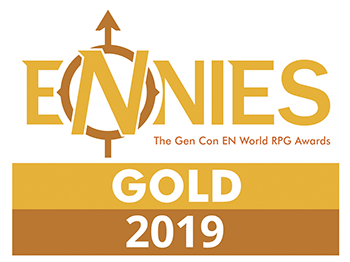We Leapt Into the Sky
Table of Contents
Chapter 1: The Explorers Arrive Chapter 2: The Desert Temple Chapter 3: Tall Spires and Strange Dreams Chapter 4: The Fall Chapter 5: Contact and Communication Chapter 6: Shards Chapter 7: We'll Look Out for Each Other Chapter 8: Splinter and Break Chapter 9: This Expedition is Over Chapter 10: In Transit Chapter 11: Limbo Chapter 12: Restoration Chapter 13: Corrosion Chapter 14: Crossing the Desert Chapter 15: Don't Be a Stranger Chapter 16: Extrapolation and Invention Chapter 17: The Shadow Chapter 18: Reconnection Chapter 19: I Thought I Was Alone Chapter 20: Faraway Mountains Chapter 21: When Science Doesn’t Win Chapter 22: Home Chapter 23: Paperwork Chapter 24: Memories Chapter 25: A Colleague and Friend Chapter 26: Distant Clouds and Lost Knowledge Chapter 27: Hope Chapter 28: A Service for a Friend Chapter 29: Together Chapter 30: To Greet the World With Awe Chapter 31: Shadow and Color Chapter 32: A Field of Sunflowers Chapter 33: Embracing the UnknownChapter 5: Contact and Communication

“I’m not against the idea,” Bria said.
The four explorers stood inside a round structure made of lightweight metal and canvas. Crates of dehydrated food were stacked on a table beside large drums of water. Bria busied herself with organizing a box of samples they had collected yesterday.
“Yeah, I’m not keen on it,” Kendra said.
“Really? Camping out here?” Antony asked. “Listen Seph, if you want to do that, be my guest. But I refuse to camp anywhere with the slightest chance of the ground opening up and swallowing me in my sleep.”
Seph’s eyes widened and he drew back. “You know what? Forget I mentioned it. You make a compelling argument.”
Antony shook his head and left, his bag slung over his shoulder.
“I’ll be along soon,” Bria said.
Kendra grabbed her pack. “Sure thing.”
She caught up to Seph as he strode across the sand with his long legs, his shoulders hunched. He nodded to her, mouth pursed.
Seph sighed as they neared the cavern entrance. “I shouldn’t have suggested camping out here. I didn’t think it through.”
“No worries, my friend. For what it’s worth, I like the ride—good time for some morning contemplation.”
“I could do without the constant bruises from the rover, though.”
“Is that the issue? Why do you have to bring it every day?” Kendra asked.
“Bria wants it here. Didn’t like the idea of leaving it out here.”
“Then she should drive it.”
“She can’t. She’s too short. Anyway, I don’t mind driving it. But I have little in the way of cushioning on my backside right now,” Seph said.
“You could repurpose something from the research station,” Kendra said. “There may be complaints if you pilfered a couch cushion, but a pillow might work.”
He hummed. “A sound suggestion.”
Kendra’s chest fluttered as she entered the cavern. The sand covering the floor sparkled in the sunlight that streamed in through the hole in the ceiling far above. The golden buildings spread out across the round cave. There were about two dozen buildings, depending on how they judged the end of one structure and the beginning of the next. Many were piled atop each other, built high into the air.
A temple marked the center of the cavern. Stairs led up to the main platform, which featured a long, curved stone roof supported by columns. Two sets of stairs on opposite ends of the pavilion led to more columns, which held up another level of the temple. It was beautiful, and yet odd. The effect reminded Kendra of the buildings she created as a child, stacking blocks at improbable angles until the whole mess came falling down.
She passed the temple, heading for the columns on the opposite wall.
Colonnades circled the ruins. These were carved into the grayish brown stone of the cavern walls, creating three levels of tunnels. The columns stood several feet apart and were decorated with the same intricate floral carvings that adorned the other ruins.
Kendra ran her hand over a column. Tiny blue markings dotted the stone, like those they noticed in the antechamber. Whether they were decorative or served some other purpose, she didn’t know. As she gathered scans of the wall, the voices of the two men carried over.
Antony was scanning a building. The drone’s blue light washed over the walls, lighting up the intricate floral patterns carved into the side. Seph hovered nearby.
“Seph, you’re kinda staring at me.”
“Are you sure you’re alright after that fall earlier? You weren’t concussed, right?”
“No, Seph, I was not concussed.”
“Are you sure? You used the medical scanner at the research station?”
“Multiple times. I didn’t hit my head, and I don’t have any concussion symptoms.”
“I tried to talk to you when I reached the cavern, but it didn’t seem like you heard me. I understand if you’re unhappy with me about the camping thing, but it concerns me when you don’t react.”
“Dude. It echoes in here. If you want my attention, use the comms.”
Seph leaned closer, lowering his voice. “Look, I know Bria has been very ‘get up and go’ about this expedition, but if you need rest, if you need medical care, that’s more important.”
Antony raised his eyebrows. “Is that a hint you want me to leave?”
“What? No! No, not at all.”
“I’m kidding. Look, I appreciate the concern, but I do not have a concussion. I’m not mad about the camping thing either.”
“Oh. Okay. So what do you think about the construction techniques here?”
The low chatter continued as Kendra entered the colonnade. Every so often, she spotted square openings above her head. They were too high to reach and they led deep into the rock, like a vent system.
A few feet beyond the last vent, a large crack marked the wall. Kendra shined her flashlight into the hole, and the light glinted off hundreds of small, black crystals. The crystals spilled out of the crevasse, studding the wall above.
Quartz, her scanner informed her. Yet, as she brushed her hand across one, it crumbled. She drew back.
“Scanner isn’t always right,” she muttered.
Kendra touched another to see if it would crumble, but it did not. Instead, a wisp of a thought entered her mind, an image of the towers of a city amid swirling nebulae.
Then there was a shout.
Kendra stepped back and spotted the men near the columns farther down. She jogged toward them. They stood near a vent in the wall, Seph’s glove digging into Antony’s shoulder.
“Oh god, what was that?”
“Can you unclench my shoulder a little?”
“Sorry,” Seph said, stepping away. “But seriously, what was that and where did it go?”
“I don’t know, but it wasn’t small,” Antony said. He turned to Kendra. “Something came out of that hole in the wall.”
“Maybe … that?” She pointed at the metallic thing floating by the nearest stone column.
The machine chirped at her.
It was a dull silver color, its body the shape of a flattened sphere about two feet wide. A round port in the middle housed a central eye, like the lens of a camera. Many shapes and depressions on its ‘face’ held what looked like other sensors. Its body had four segmented metal arms, which extended and contracted as it picked through rocks on the floor. The machine levitated silently.
She took a cautious step toward it. “Hey there, can you talk?”
It flitted back and forth, chirping again, but gave no sign it could speak.
“Antony, have you seen anything like this before?” she asked.
He shook his head. “Not exactly. But if it’s less than say, 4,000 years old, it ought to have a translator. Might respond to basic questions.” He turned to the machine. “What is your origin and serial number?”
The machine flashed a blue light over him but did not respond.
Just then, Bria jogged into the ruins, waving to them.
“Hey everyone, we’re up to date on sample collection, so—”
She stopped in her tracks.
“I think we made a new friend,” Kendra called.
They saw more of the floating machines over the next few days. There were four of them, all similar in appearance. The robots remained unperturbed by the group’s work. They failed to react to Kendra and Bria taking scans and photos of the ruins, nor did they react to Seph’s microscope or Antony’s drone.
Bria dug out a thick manual full of protocols for communicating with unknown technologies. She spent several days following the machines, trying to talk to them in as many languages as possible. She even tried projecting Asteracean symbols in the air, though they had no way of knowing what the words meant.
Eventually, it was clear the machines were unwilling or unable to communicate back.
They floated through the cavern, emitting a soft blue light from their sensors, scanning the ruins for cracks and chips. The machines patched the stone, cleaning up debris when it fell.
“So these little janitors repair the ruins,” Antony said. “Explains why the buildings are in such good shape.”
“Janitors?” Kendra asked.
“They look like the waste collection robots they used to send out around my old university campus after games. To pick up all the bottles and cans and whatnot.”
She snorted. “That reminds me. I wanted to grab a sample of one of the crystals. Want to come with?”
“Yeah, sure,” he said, following her to the crevasse she had found earlier. However, when they reached it, the crack in the rock was sealed over, with a few smaller crystals lying on the ground. As she approached, two machines exited the vent.
One flew over to Antony. It flitted around him, prodding at his arm. Another machine flew to the crystals instead, casting a blue light around them. Using some attachment at the end of its arms, it printed a coating around the crystals and scooped them up, flying back into the vents.
“Are those dangerous?” Kendra asked, but the remaining machine only floated nearer to her, flitting back and forth near her legs before leaving.
“That was weird,” Antony said. “Why were they so interested in my arm?”
“How is your arm? Is it healed yet?”
“It still feels weird. I keep wondering if there’s something stuck in there.”
“A splinter?”
Antony shrugged. “I don’t know. I’ve scanned it a bunch of times and nothing shows up.”
“I don’t suppose you’ve spoken with anyone else about this.”
“Not really. I don’t know that it’s worth making it into a big deal when it may just be my imagination. Although watching those machines react like that doesn’t make me feel great,” he said, crossing his arms.
“My scanner keeps saying they’re quartz, but some of them crumble into dust,” Kendra said.
“Same,” Antony said, frowning. “Just silicon dioxide. I want to study them more in depth.”
“Well, it wouldn’t hurt to keep monitoring your arm,” Kendra said.
“Yeah, I will.”
Antony stood at the front of their cramped, windowless conference room, a laser pointer in his hand. Next to him floated a hologram of the ruins.
“We surveyed every building in the main cavern,” he said. “But it’s likely there are other caves within the plateau. There may be more ruins as well. Many buildings bear similar markings to the ruins we found earlier.”
“Yet it remains unclear what their purpose was, or how they arrived here,” Bria said.
Antony nodded. “Right. There’s little evidence pointing to their use. It’s easy to call something a temple, but we don’t know what the actual cultural context was.”
“True enough,” Bria said. “But we have evidence that they could have come from Asteracea.”
“Yeah, we have dozens of rock samples with the high cadmium levels and chemical profiles associated with Asteracea,” Kendra said. “The samples we analyzed from the main cavern also dated to around 12,000 years old. Same as what we found at the earlier sites.”
“The inscriptions and iconography also line up with ruins on Asteracea,” Antony said.
Seph frowned, his hands folded across his chest.
“What is it, Seph?” Kendra asked.
“Some things don’t add up for me,” he said, sitting up straight. “I’ve fed the images and scans from the main cavern into the architectural recognition software. It’s not as convincing of a match with the Asteracean architecture anymore.”
He projected a set of holograms of the ruins onto the table. “There are several areas where the construction techniques don’t match those documented on Asteracea. When we compare the buildings from the cavern with those found on Asteracea of similar age, we get a 67% match.”
“Remind us how this analysis works again,” Antony said as he sat down. A pained expression crossed his face, though it seemed unrelated to the conversation. He fidgeted with his ear.
“Well, it takes scans, measurements, and photographs from documented archaeological sites and uses learning algorithms to match up whatever we put into it,” Seph said.
Bria folded her hands in front of her. “The sites documented on Asteracea are poorly preserved due to rampant acid rain and environmental collapse. It’s like comparing a house to a pile of rubble with a few doors and windows.”
“But the analysis accounts for that. Moreover, I think these buildings were constructed using different techniques. Many buildings on Asteracea were made from brick. Here, there’s evidence of laser carving and 3D printing,” he said.
Kendra zoomed in on the hologram to show a mottled area with different colors of stone. “Look, it’s undeniable that the robots have made repairs using local stone; these buildings are in amazing shape. But the chemical profile of stone on Asteracea is unique, and the golden stone from the ruins matches Asteracean stone. It’s possible the machines restored the ruins, making some changes in the process.”
A soft squealing emanated from something in the room. Seph shifted in his seat, biting his lip. “I would expect robots programmed for restoration to restore the structures using the original building techniques.”
Bria crossed her arms. “I don’t know if that’s a fair assumption. We know little about Asteracean technology or their philosophies on architecture and preservation.”
“Can we talk about the little janitors for a minute?” Antony asked, leaning forward. “I think we’ve scanned all of them, though they don’t seem to like stasis fields.”
“Did you catch one in a stasis field?” Kendra asked.
“Briefly. Held for a moment until the thing deactivated it somehow.”
“Well, we can’t obtain serial numbers from them, and they don’t match any known flying robots in the databases,” Seph said. He frowned, looking around as the squealing started up again.
“Yeah, they’re old. Too old to have a universal translator, and it’s not clear what’s powering them,” Antony said.
“Alright, I’m not the only one hearing that, right?” Seph asked. “That squealing noise?”
“I’ve got an equipment malfunction,” Antony said, expression tight as he toggled settings on his wearable until the sound died away.
“Really? What kind of—”
Bria shot him a pointed look.
Antony ran his hand through his hair, leaving waves sticking up. “Okay, can we get back to talking about the janitors?”
Seph pursed his lips. “Can we call quit calling them that?”
“What’s wrong with calling them janitors?”
“Well, their primary job doesn’t seem to be cleaning,” Seph said, crossing his arms.
“And what do you suggest, then?”
He shrugged. “Well, the term ‘machines’ seems adequate.”
Kendra rubbed her forehead. “Okay, we’re getting derailed.”
“Indeed,” Bria said. “Let’s discuss theories about their origins. Are the machines Asteracean?”
“I think that’s the most parsimonious explanation,” Antony said. “Maybe they were more advanced than we realized. Maybe they were even spacefaring.”
Bria nodded. “It’s likely that other ancient peoples developed limited spaceflight technology before the first true spacefaring age.”
“If these buildings were culturally significant, people might have transported them off the planet. A lot of effort, but it’s happened before,” Antony said. “Something wiped the Asteracean people out by the time early spacefarers visited the planet. Maybe some people tried to flee, knowing they couldn’t come back.”
“That implies they had the resources for a ship powerful enough to move whole buildings. What about ancient archaeologists from a different culture removing them to study?” Kendra asked.
“That’s been documented in the past,” Bria said. “They would use sophisticated stasis fields to keep structures intact and prevent damage in transit. But even archaeologists from the first spacefaring age knew little about the Asteraceans. We don’t know why they’d devote so much effort to move whole buildings.”
“Or the buildings were moved off-planet by ancient scavengers. Those machines could have belonged to them,” Seph said.
“Surely, if they were programmed as scavengers, they would have just removed smaller valuable objects, right? And why would they still be taking care of the structures?” Antony asked.
“Maybe without the people who programmed them, their objective changed over time,” Seph said.
“What’s your theory then?”
“Machines don’t learn like people,” he said. “You put garbage in, you get garbage out. People usually have a better capacity for critical thinking and error correction than a rudimentary machine does. If these machines weren’t configured correctly for repair, they could have accumulated enough errors over time for us to see a shift in architectural style and techniques. And the most likely reason they weren’t configured correctly? Because they weren’t familiar with Asteracean architecture to begin with.”
Antony frowned. “I don’t think we can just say that without more evidence. It’s more parsimonious that they came from Asteracea.”
Seph shrugged. “Well, we’ll have to disagree until we get more data.”
“I think we’re done for today,” Bria said. “Let’s take the rest of the afternoon off.”
“Great,” Antony said, and left the room. Seph lingered a few moments longer, most likely to avoid meeting Antony in the hallway, and then he left as well.
Bria remained. She rotated the hologram of the ruins, examining one building with elegant floral carvings over the entrance.
“You look deep in thought,” Kendra said.
“What we’ve found here is huge. We’ve done a surface level characterization, but this is far more than we can study in one expedition. And that’s not taking into consideration additional ruins we may find within the caves.”
“It’s a lot. Far more than I expected to find here,” Kendra said, leaning back in her chair.
“Certainly.” Bria met her gaze, a hint of a frown on her face. “To be honest, I find it overwhelming. Do you?”
“I’m choosing to remain optimistic,” Kendra said. “We have plenty of time to learn more about this place. If it’s too much for one expedition, I bet the company would be amenable to funding another in the future.”
Bria nodded. “I suppose so. Would you consider coming on another expedition here?”
Kendra smiled. “Sure.”







